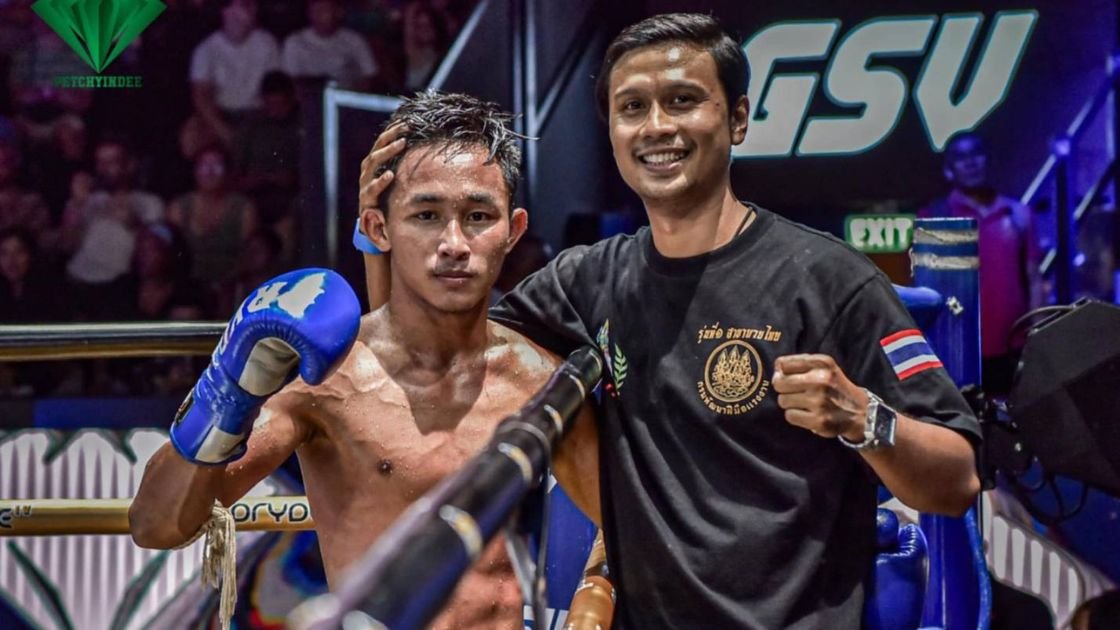Introduction to Muay Thai
Muay Thai, often referred to as the “Art of Eight Limbs,” is a traditional martial art from Thailand that employs the use of fists, elbows, knees, and shins. This multifaceted form of combat has a rich history dating back centuries, originating as a means of self-defense and evolving into a prominent sport and cultural tradition. Today, Muay Thai is not only a crucial element of Thai heritage but also an influential discipline within the global martial arts community.
The significance of Muay Thai in the realm of martial arts cannot be overstated. Its comprehensive approach to striking and defensive techniques sets it apart, making it a valuable skill for both self-defense and competitive sports. What makes Muay Thai particularly compelling is its emphasis on mastering fundamental techniques. These basics form the foundation upon which all advanced maneuvers are built, highlighting the necessity for both beginners and seasoned practitioners to constantly refine their skills.
Mastering the basics of Muay Thai is crucial for several reasons. Firstly, it ensures that practitioners develop proper technique, which is vital for both efficacy and safety during training and competition. Proper technique minimizes the risk of injury and maximizes the effectiveness of strikes and defenses. Secondly, balance is a core principle in Muay Thai. Whether executing strikes or defending against them, maintaining balance allows for greater control and fluidity of movement. Lastly, precision is paramount in Muay Thai; each strike and block must be executed with intent and accuracy to be effective.
In conclusion, the journey to mastering Muay Thai begins with a solid understanding and continuous practice of its fundamental techniques. The focus on technique, balance, and precision not only enhances one’s performance but also fosters a deeper appreciation for this ancient and revered martial art. As we delve into the step-by-step guides to these fundamental techniques, remember that mastery comes through disciplined practice and dedication.
Basic Stance and Footwork
The cornerstone of mastering Muay Thai lies in understanding and perfecting the basic stance and footwork. A solid base is essential for both offensive and defensive maneuvers, providing the foundation for all subsequent techniques.
Begin by positioning your feet approximately shoulder-width apart. Your lead foot, typically your left if you are right-handed, should point forward, while your rear foot angles out slightly at about 45 degrees. This stance ensures optimal balance and readiness for movement in any direction.
Next, slightly bend your knees to lower your center of gravity, enhancing stability and agility. Distribute your weight evenly between both feet, allowing for quick transitions. Your hands should be held up, forming a guard around your face, with your elbows close to your body to protect your midsection. Keep your chin tucked to minimize the risk of head strikes.
With the basic stance established, proper footwork becomes the next focus. Effective movement in Muay Thai involves maintaining balance and control while moving forward, backward, and laterally. Start with moving forward: push off with your rear foot and step forward with your lead foot, followed by bringing your rear foot back into the original stance. This method ensures that you stay grounded and prepared to strike or defend.
To move backward, reverse the process: push off with your lead foot and step back with your rear foot, then re-establish your stance. This keeps you balanced and ready to counter any attacks. Lateral movement, or side-stepping, is similarly crucial. To move to the left, step your lead foot to the side first, followed by your rear foot, ensuring you maintain the stance’s structural integrity. The same principle applies when moving to the right.
Consistent practice of these fundamental stances and footwork techniques will create a sturdy foundation, enabling the execution of more complex Muay Thai maneuvers with precision and power. Mastery of these basics is vital for anyone aspiring to advance in the art of Muay Thai.
Mastering the Jab and Cross
In Muay Thai, mastering the jab and cross punches is fundamental for building a solid offensive and defensive foundation. Each punch involves precise mechanics that require attention to detail and consistent practice.
The Jab: The jab is a quick, straight punch thrown with the lead hand. To execute it correctly, start in your fighting stance with your hands up, elbows in, and feet shoulder-width apart. As you throw the jab, extend your lead arm straight out, rotating your fist so that your thumb points downward at the end of the punch. Simultaneously, push off your back foot to generate power and step forward slightly with your lead foot. Ensure your shoulder protects your chin and your non-punching hand remains near your face for defense. The jab should snap back to its original position quickly after the punch is thrown.
The Cross: The cross is a powerful straight punch thrown with the rear hand. Begin in your fighting stance with hands up and elbows tucked. As you execute the cross, rotate your back foot and hip forward to generate power, while extending your rear arm straight out. Your rear shoulder should protect your chin, and your fist should rotate so the thumb points downward at the end of the punch. Your lead hand remains up, ready to defend. The key to a strong cross is the rotation of your hips and shoulders, which transfers your body weight into the punch.
Common Mistakes to Avoid: One common mistake is overextending the jab, which compromises balance and exposes you to counterattacks. Another is failing to rotate the hips and shoulders during the cross, resulting in a weaker punch. Additionally, dropping the non-punching hand while throwing either punch leaves you vulnerable to strikes.
Tips for Improvement: To enhance speed and accuracy, practice shadowboxing, focusing on smooth, fluid movements. Incorporate mitt work into your training to refine your technique and timing. Pay attention to maintaining proper form and foot positioning, ensuring power and precision in every punch.
Executing Powerful Hooks and Uppercuts
Mastering the art of throwing effective hooks and uppercuts is vital for any Muay Thai practitioner. These punches, when executed correctly, can be game-changers in a bout. Let’s delve into the techniques behind these powerful strikes.
To throw a hook punch, begin by ensuring your stance is solid. Your feet should be shoulder-width apart, knees slightly bent, with your weight evenly distributed. As you initiate the hook, rotate your lead foot and hips towards your opponent. This rotation is crucial as it generates the power for the punch. Simultaneously, pivot on the ball of your rear foot, allowing your shoulders to follow through. Your lead arm should move in a circular motion, maintaining a 90-degree angle at the elbow. Keep your fist horizontal, aiming to connect with the opponent’s jawline or temple. Remember, the power in a hook comes from the rotation of your hips and shoulders, not just the arm.
The uppercut, another essential weapon in Muay Thai, targets the opponent’s chin or solar plexus. Start in your fighting stance. As you throw the uppercut, drop your rear shoulder slightly and bend your knees to generate upward momentum. Drive the punch upward by rotating your hips and pushing off your rear foot. Your fist should travel in a vertical path, with the elbow close to your body for protection. The aim is to generate enough force to lift your opponent’s head, creating openings for further strikes. The upward thrust combined with the hip rotation lends the uppercut its formidable power.
Maintaining balance is paramount. Always return to your fighting stance after throwing a hook or uppercut. This ensures you’re ready to defend or follow up with additional strikes. Avoid telegraphing your punches by keeping your movements swift and concise. Exaggerated motions can give your opponent time to react and counter.
With these techniques, hooks and uppercuts can become indispensable tools in your Muay Thai arsenal, significantly enhancing your striking capabilities.
Mastering the Muay Thai Roundhouse Kick
The Muay Thai roundhouse kick, known for its devastating power and precision, is a foundational technique in the art of Muay Thai. Properly executing this kick involves a combination of body mechanics, balance, and timing.
To begin, stand in your fighting stance with your guard up. The first crucial step is hip rotation; your hips should lead the motion to generate power. Initiate the kick by turning your hips towards the target. At the same time, pivot on the ball of your supporting foot. This pivot increases the range of motion and ensures that your entire body weight is behind the strike. It is essential to keep your knee slightly bent as you pivot to maintain balance.
The striking surface for the roundhouse kick is the shin, not the foot. Striking with the shin bone ensures maximum impact and minimizes the risk of injuring your foot. Aim for the opponent’s mid-section, thigh, or head, depending on the situation and your flexibility. As your leg swings through, maintain a slight bend in your striking leg to protect your knee joint.
Flexibility and power are paramount in perfecting the roundhouse kick. Regular stretching exercises, such as dynamic leg swings and static stretches, can improve your hip flexibility, allowing for higher kicks and better form. Strength training, particularly for the core and legs, can enhance the power behind your kicks. Plyometric exercises such as jump squats and box jumps are particularly effective for building explosive strength.
Common errors to watch out for include insufficient pivoting on the supporting foot, which can lead to reduced power and potential injury, and striking with the foot instead of the shin, which can cause foot injuries. Additionally, ensure your guard remains up throughout the kick to protect against counter-attacks.
By focusing on these key elements—hip rotation, proper pivoting, and striking with the shin—you can master the Muay Thai roundhouse kick, making it a powerful weapon in your Muay Thai arsenal.
Effective Knee Strikes
Knee strikes are a cornerstone of Muay Thai, offering both offensive and defensive capabilities. Mastering these techniques is essential for anyone looking to build a solid foundation in this martial art. There are various types of knee strikes, each serving distinct purposes in a fight. The most common types include straight knees and diagonal knees. Understanding and practicing these techniques can significantly boost your effectiveness in the ring.
Step-by-Step Guide to Straight Knees
1. Stance: Begin in your basic Muay Thai stance with feet shoulder-width apart, knees slightly bent, and hands up in guard position. Ensure your weight is evenly distributed.
2. Preparation: Slightly pivot your rear foot outward to open up your hips. This movement sets the stage for maximum power generation.
3. Execution: Drive your rear knee upward and forward, aiming to strike with the hard bony part of the knee. Simultaneously, thrust your hips forward to add momentum and power to the strike.
4. Follow-through: Ensure your standing leg is stable to maintain balance. Quickly return to your original stance to prepare for the next move.
Step-by-Step Guide to Diagonal Knees
1. Stance: Begin in your basic Muay Thai stance, ensuring proper balance and guard.
2. Preparation: Pivot your rear foot outward while slightly twisting your hips to create an angular trajectory for the knee strike.
3. Execution: Drive your knee diagonally upwards towards the target. The twist of your hips should guide the knee, ensuring it lands at an angle.
4. Follow-through: After landing the strike, quickly retract your knee and return to your stance, maintaining balance and readiness.
Effective use of knee strikes often involves clinch control. In a clinch, securing a firm grip behind your opponent’s neck or upper body enables powerful knee strikes. Ensure your elbows are close to your opponent’s head to minimize their escape routes. Additionally, controlling distancing is crucial; too close, and your knees lose impact; too far, and you risk missing the target. Proper clinch control and distancing allow for precise and effective knee strikes, cementing their place as fundamental techniques in Muay Thai.
Utilizing Elbow Techniques
Elbow strikes are a definitive and powerful weapon in Muay Thai, often utilized for their versatility and ability to cause significant damage. Mastering these techniques requires a combination of precision, timing, and practice. Below, we delve into the three primary types of elbow strikes: horizontal, diagonal, and upward elbows, providing detailed instructions on how to execute each one effectively.
Horizontal Elbow
The horizontal elbow strike is a lateral attack aimed at an opponent’s temple or jaw. To execute this technique, start in your guard position with elbows tucked in. Rotate your torso while pivoting on your lead foot, and swing your elbow horizontally, ensuring your forearm remains parallel to the ground. The power comes from the rotation of your hips and shoulders. Focus on striking with the sharp point of your elbow to maximize impact.
Diagonal Elbow
Diagonal elbows are versatile, allowing you to strike both upward and downward angles. For an upward diagonal elbow, begin in your guard stance. Rotate your hips and shoulders, and bring your rear elbow up diagonally across your body, aiming for the opponent’s nose or chin. Conversely, the downward diagonal elbow starts with a similar rotation but aims downwards towards the opponent’s collarbone or nose. The key is to maintain a fluid motion, ensuring your elbow cuts through the air with precision.
Upward Elbow
The upward elbow strike targets the opponent’s chin or nose, making it a devastating close-range weapon. From your guard stance, drop your body slightly by bending your knees. Explosively drive your rear elbow upward in a straight line, using your legs and hips to generate power. Keep your forearm close to your body to ensure accuracy and minimize telegraphing your move.
Drills for Improving Elbow Techniques
To hone your elbow strikes, incorporate specific drills into your training regimen. Shadowboxing is an excellent way to practice the mechanics and flow of each elbow strike. Focus mitt drills with a partner can improve your timing and targeting precision. Additionally, bag work, particularly on a heavy bag, allows you to develop power and conditioning. Repetition and consistency are crucial; aim to execute each strike with maximum sharpness and effectiveness.
Combining Techniques and Creating Combinations
Mastering the individual techniques of Muay Thai is essential, but the true art lies in the ability to link these techniques together seamlessly to form effective combinations. Combining techniques not only maximizes the impact of each strike but also keeps your opponent guessing, thereby enhancing your defensive and offensive strategies. The fluidity in transitioning from a punch to a kick, or from a knee to an elbow strike, defines the proficiency of a Muay Thai practitioner.
A fundamental approach to creating combinations involves starting with basic sequences. For instance, a simple yet effective combination could be a jab-cross followed by a low kick. This sequence begins with straightforward punches to distract and measure distance, then transitions into a powerful kick aimed at unbalancing the opponent. Another example is integrating knee strikes; a common combination could be a jab-cross-hook followed by a knee strike. This sequence utilizes punches to set up a close-range knee, effectively targeting the opponent’s midsection.
Elbows and knees are particularly effective in close-quarter combat. A practical combination might involve a jab-cross to close the distance, followed by an elbow strike and a knee. These techniques capitalize on the close proximity to deliver powerful blows that can disrupt the opponent’s guard. Emphasizing continuous movement and fluid transitions is crucial for maintaining the upper hand.
To maintain balance throughout these combinations, it is vital to pay attention to footwork and body positioning. Proper stance and shifting weight efficiently can aid in transitioning smoothly between strikes. For example, after delivering a kick, promptly retracting the leg and resetting your stance ensures you are prepared for the next move. Keeping a slight bend in the knees and staying light on the feet allows for quicker adjustments and better agility.
Incorporating feints and defensive maneuvers while creating combinations can enhance their effectiveness. Feinting a jab before delivering a low kick can catch the opponent off guard and create openings for additional strikes. Likewise, integrating defensive movements such as slips or blocks within combinations ensures a well-rounded approach that prioritizes both offense and defense.
Ultimately, the ability to combine techniques and create fluid combinations is a testament to a practitioner’s skill and understanding of Muay Thai. Practicing these sequences diligently can significantly improve one’s fighting prowess, making each strike more potent and each combination more effective.




